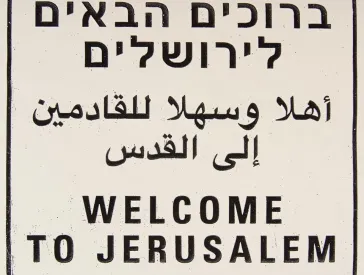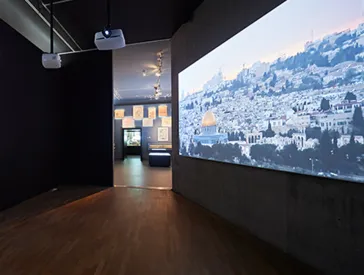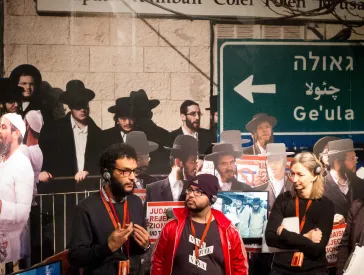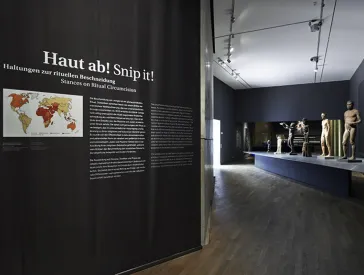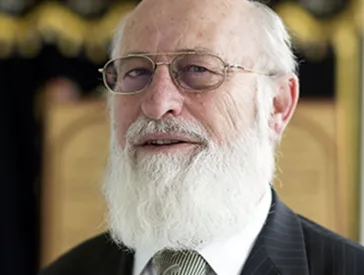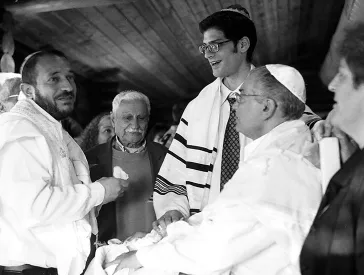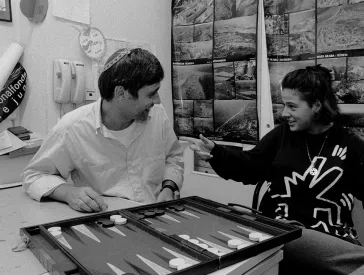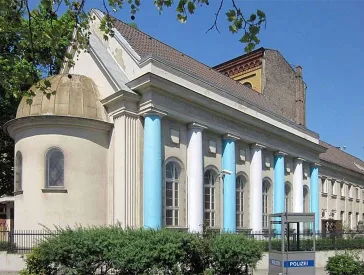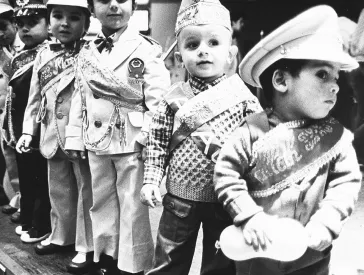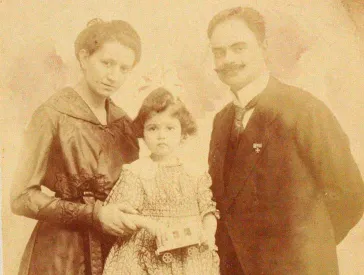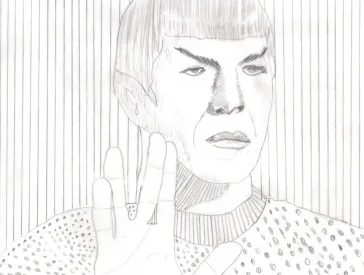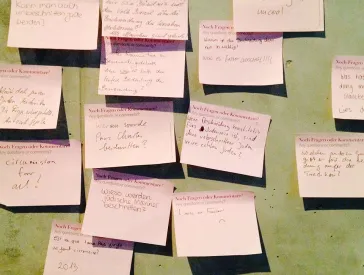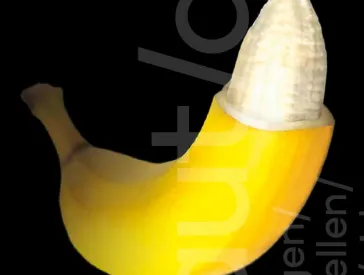Im Hamsterrad der Argumentation
Über religionsfeindliche Urteile mancher Besucher*innen der Ausstellung „Haut ab!“
Wie spät es ist, weiß ich nicht, aber es ist bereits hell. Mein Wecker wird bald klingeln, meine Augen sind auf, der Himmel trägt sein tägliches Grau. Hinter meinen Augen drehen sich Argumente – rechtliche, religiöse, soziale und medizinische. Meine Zunge zuckt kaum, aber meine Gedanken sprechen zweistimmig. Ich bin wieder im Hamsterrad der Argumentation, in das ich während meiner Führung durch die Ausstellung Haut ab! Haltungen zur rituellen Beschneidung am Vortag gezerrt wurde. So oft ich mich mit der hartnäckigen Besucherin darauf verständigt hatte, dass zwischen der rituellen Knabenbeschneidung und der weiblichen Genitalverstümmelung schwerwiegende Unterschiede bestehen, so oft führte sie letztere dennoch immer wieder in ihren Argumentationsspiralen an.
Trotz der Erklärung von Kuratorin Cilly Kugelmann (nachzulesen in der Einleitung zum Begleitband, als PDF auf der Katalogseite herunterladbar), dass wir mit der Haut-Ab!-Ausstellung die Debatte von 2012 über die rituelle Knabenbeschneidung nicht fortführen wollen; trotz einer Ausstellung, die vor allem die kulturhistorischen Hintergründe des Rituals thematisiert; trotz meiner behutsamen Präsentation in den Führungen, mit der ich zum Schauen und Verstehen und nicht zum Urteilen und Streiten anregen möchte; trotz der vielen Besucher*innen, die mit großer Offenheit und Interesse meine Anregungen annehmen:
Gespräche wie dieses, dessen intrusive Drehkraft mich an diesem Morgen aus der Nacht in den Tag spült, sind in längerer oder kürzerer Form Bestandteil fast jeder Führung durch diese Ausstellung.
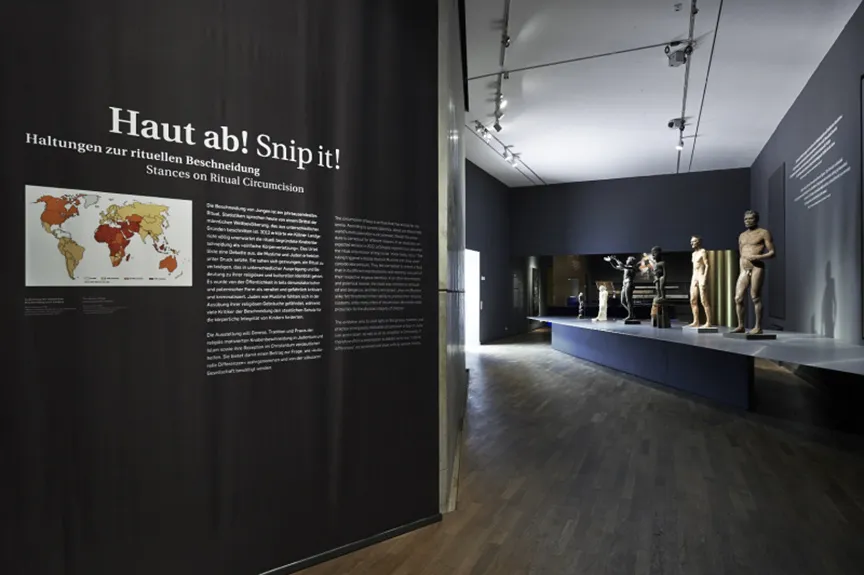 X
X
Ansicht der Ausstellung Haut ab! mit Blick auf den Raum „Auf Messers Schneide“; Jüdisches Museum Berlin, Foto: Yves Sucksdorff
Begegnungsmodus: Richter
Statt einer traditionellen Museumsführung bieten wir unseren Besucher*innen hier wandernde Gesprächskreise an, die zur Begegnung einladen sollen. Viele kommen allerdings nicht wie sonst in unser Haus – interessiert, vorsichtig, andächtig, beschämt, aufgeregt, prüfend, gelangweilt, erschöpft, nachdenklich und in unzähligen Vermischungen dieser unvollständigen Liste. Gerade bei Erwachsenen dominiert eine andere Haltung gegenüber dem Thema der Ausstellung: der Modus des Urteilens. Aus Museumsbesucher*innen werden Richter*innen. Die Objekte, Bilder und Texte werden nicht als Lernquellen oder Erfahrungsorte, nicht als Evidenzen der Geschichte oder „langweiliges altes Zeug“, sondern als Reizmittel wahrgenommen, die zur Äußerung von Für- und Widerargumenten provozieren. Alles Gezeigte scheint vorab bereits einer Falsch-Richtig-Binarität zu unterliegen, die sich dann vor Ort und am einzelnen Gegenstand konkretisiert. Und zwar überwiegend in ein- und demselben Sinn.
Das Urteil
„Ein hoher Preis“, urteilt zum Beispiel ein Gymnasiallehrer, die Stimme voll donnerndem Pathos. Wir befinden uns im „Wortraum“, dem zweiten Kapitel der Ausstellung. Grell bestrahlt von der Kraft neuester Erleuchtungsstechnik mit weißen Buchstaben auf einer weißen Wand, empfängt hier das wegweisende Zitat aus dem ersten Buch Mose die geblendeten Besucher*innen. Hier stehen wir uns gegenüber. Die Plastizität unserer Körper zur Schau gestellt in der Präzision des Neons.
Als seien wir selbst vom Messerklingenlaufsteg hinuntergestiegen, vor dem wir eben noch standen, im ersten Kapitel der Ausstellung, vor den Plastiken aus fünf Jahrtausenden Menschheitsgeschichte, den Körperidealen und der kulturellen Vielfalt, in Stein gemeißelt, aus Holz geschnitzt, in Gips und Harz gegossen. Er ist Mitte fünfzig, deutsch und christlich-säkular. Einen hohen Preis, meint er, müssten „die Juden“ für „ihren Bund“ mit Gott zahlen. Und weil „ein hoher Preis“, gesprochen mit solch donnerndem Ton einen zu hohen Preis meint, haben wir hier die erste Beschneidungskritik dieser Führung – lang hat es, wie üblich, nicht gedauert. Der Vorwurf lautet: Eltern, die ihre Kinder beschneiden lassen, unterstellen diesem Akt einen Wert, den er nicht hat. So führt diese Kritik in eine der großen Herausforderungen des Themas und der Ausstellung: Zu verstehen, dass es Menschen gibt, für die die Beschneidung einen so großen Wert hat, dass sie die Schmerzen und Risiken des Eingriffs in Kauf nehmen. Dass sie eben genau kein zu hoher Preis sind für das, was die Beschneidung bewirkt und bedeutet.
Die vierte Haltung
Wir befinden uns nun im zweiten Teil des „Round-Table-Trialogs“, dem vierten Raum der Ausstellung. Hier wird die Beschneidung im Islam vorgestellt und hier beginne ich die Abschlussdiskussion mit der Klasse dieses Lehrers an einer Schule, auf der es nach Aussage der Schüler*innen keine Muslime, aber einen Juden gibt. Ein Gymnasiast ergreift das Wort: „Ehrlich gesagt hat sich meine Meinung zu dem Thema nicht geändert, ich halte das weiterhin für totalen Schwachsinn.“ Mit diesem Satz sind wir jenseits von Argumenten. Was sich hier zeigt, ist nicht eine der drei Haltungen zur rituellen Beschneidung – die jüdische, muslimische oder christliche –, deren Kulturgeschichte die Ausstellung skizziert. Es ist eine vierte Haltung, der die Ausstellung kein eigenes Kapitel widmet.
Soll man das Fehlen bemängeln? Manche Besucher*innen unterstellen dem Museum ja tatsächlich strategische Auslassungen: „Geht die Ausstellung auch auf die Schmerzen der Kinder ein?“, wird nach meiner einführenden Darstellung der Ausstellungskapitel anklagend gefragt. „Ich finde es schade, dass die Ausstellung der medizinischen Perspektive keinen hinreichenden Raum gibt“, am Ende der Führung bemängelt. In ihrer Summe bezeugen die Auslassungsvorwürfe allerdings selbst weitere Auslassungen: Bisher fragte niemand, ob wir denn nicht auch auf die Entblößungen eingehen, zu dem mutmaßlich jüdische Männer von Nazis gezwungen wurden; bisher fragte auch niemand, wo die Wand ist, auf der wir die antisemitischen und islamfeindlichen Tiraden ausstellen, die 2012 unter vielen Artikeln zur Beschneidungsdebatte die Kommentarketten verunstalteten; und bisher fragte niemand, ob wir nicht auch auf die Genese und Eigenart dieser vierten Haltung eingehen hätten können, aus der solcherart Tiraden hervorsprießen: Auf eine unsensible, grob verallgemeinernde, schlecht informierte Religionsfeindlichkeit.
Live und in Farbe
Aber die Kuratorinnen haben hier mit Weitsicht entschieden. Für diese Haltung brauchte man keine Ausstellungsfläche. Wie wir sehen, wird sie von so manchen Besucher*innen selbst in die Ausstellung getragen und hier mit Herzenslust aufgeführt.
Daher empfehle ich Freund*innen und Bekannten und allen Leser*innen hier, nicht einfach nur eine Ausstellung zu besuchen, sondern bei öffentlichen Führungen teilzunehmen. Mit etwas Glück oder Pech werden Sie dann dieses erweiterte Haltungsspektrum erleben. Neben einer kulturgeschichtlichen Einführung in die jüdische, muslimische und christliche Tradition der rituellen Beschneidung live und in Farbe, zuweilen auch borniert und selbstgerecht: Religionsfeindlichkeit in Aktion.
Andy Simanowitz, Guide im Jüdischen Museum Berlin
Zitierempfehlung:
Andy Simanowitz (2015), Im Hamsterrad der Argumentation. Über religionsfeindliche Urteile mancher Besucher*innen der Ausstellung „Haut ab!“.
URL: www.jmberlin.de/node/6561
Erfahrungsberichte: Was man bei Führungen alles erleben kann (5)
Blick hinter die Kulissen: Beiträge zur Ausstellung „Haut ab! Haltungen zur rituellen Beschneidung“ (9)

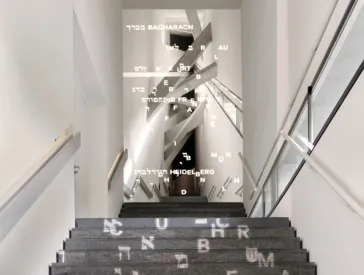
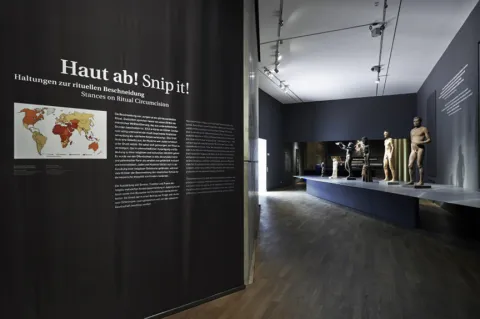
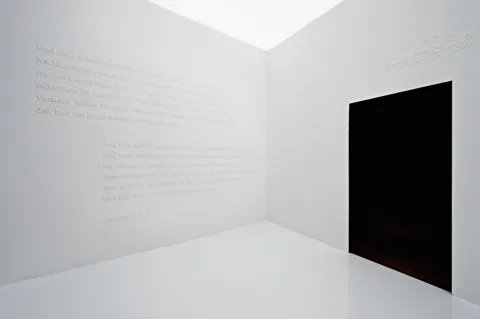
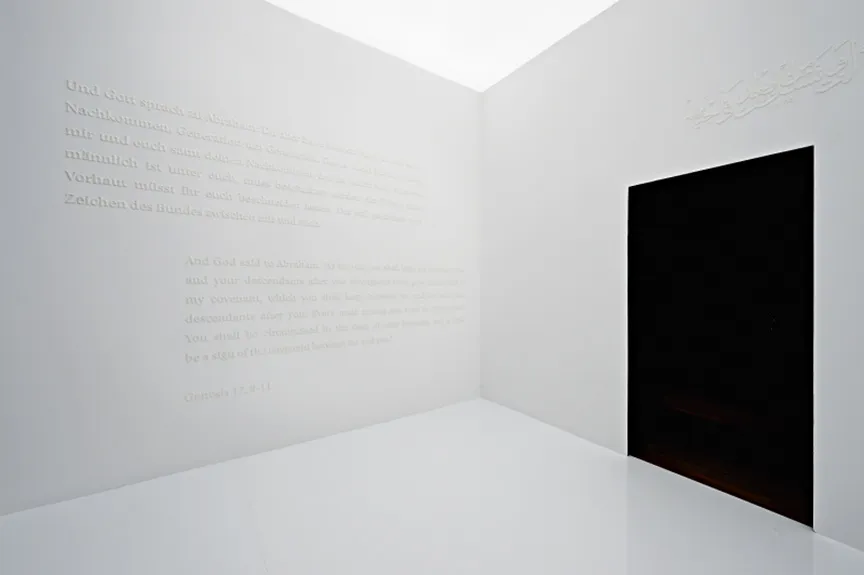 X
X
